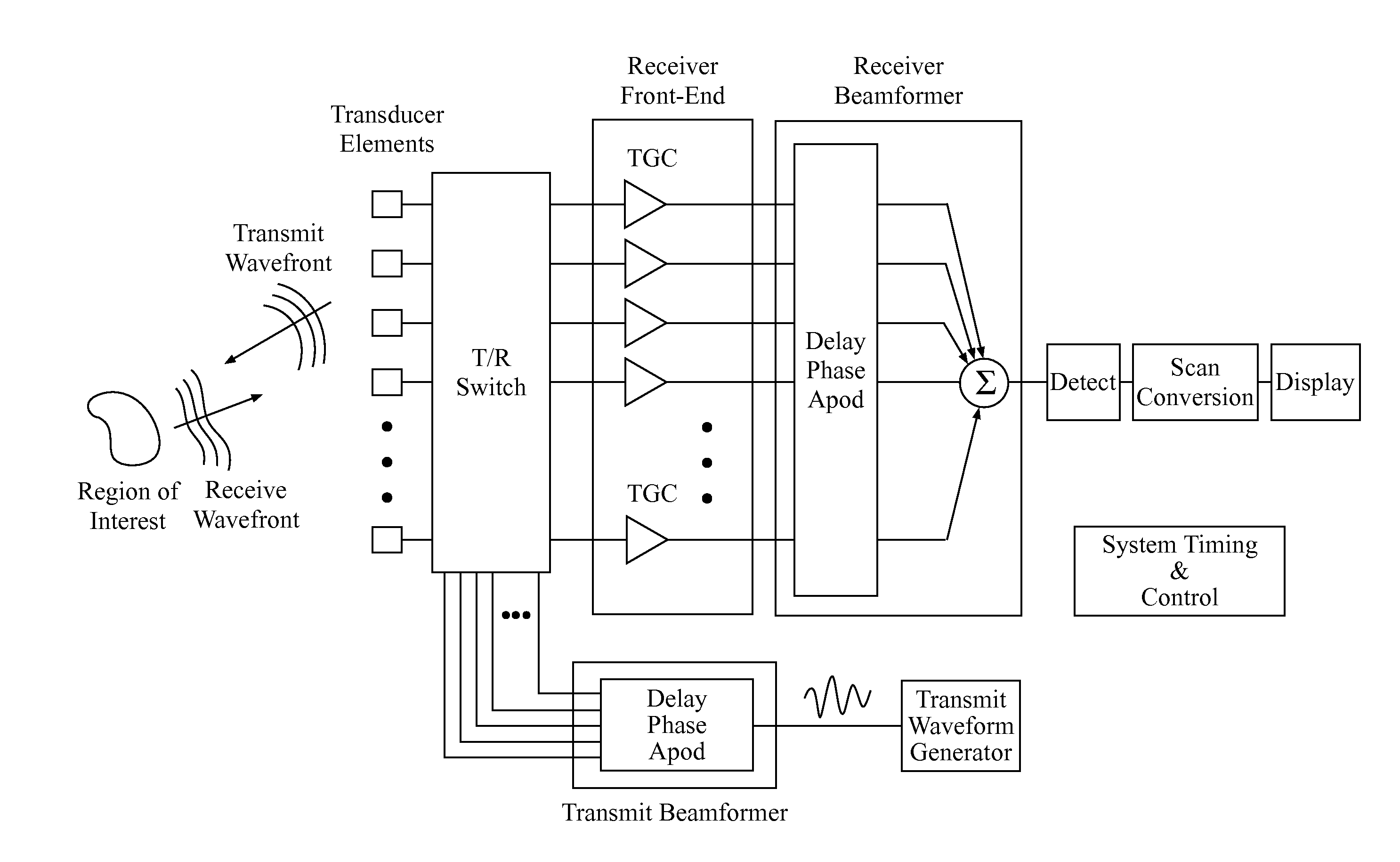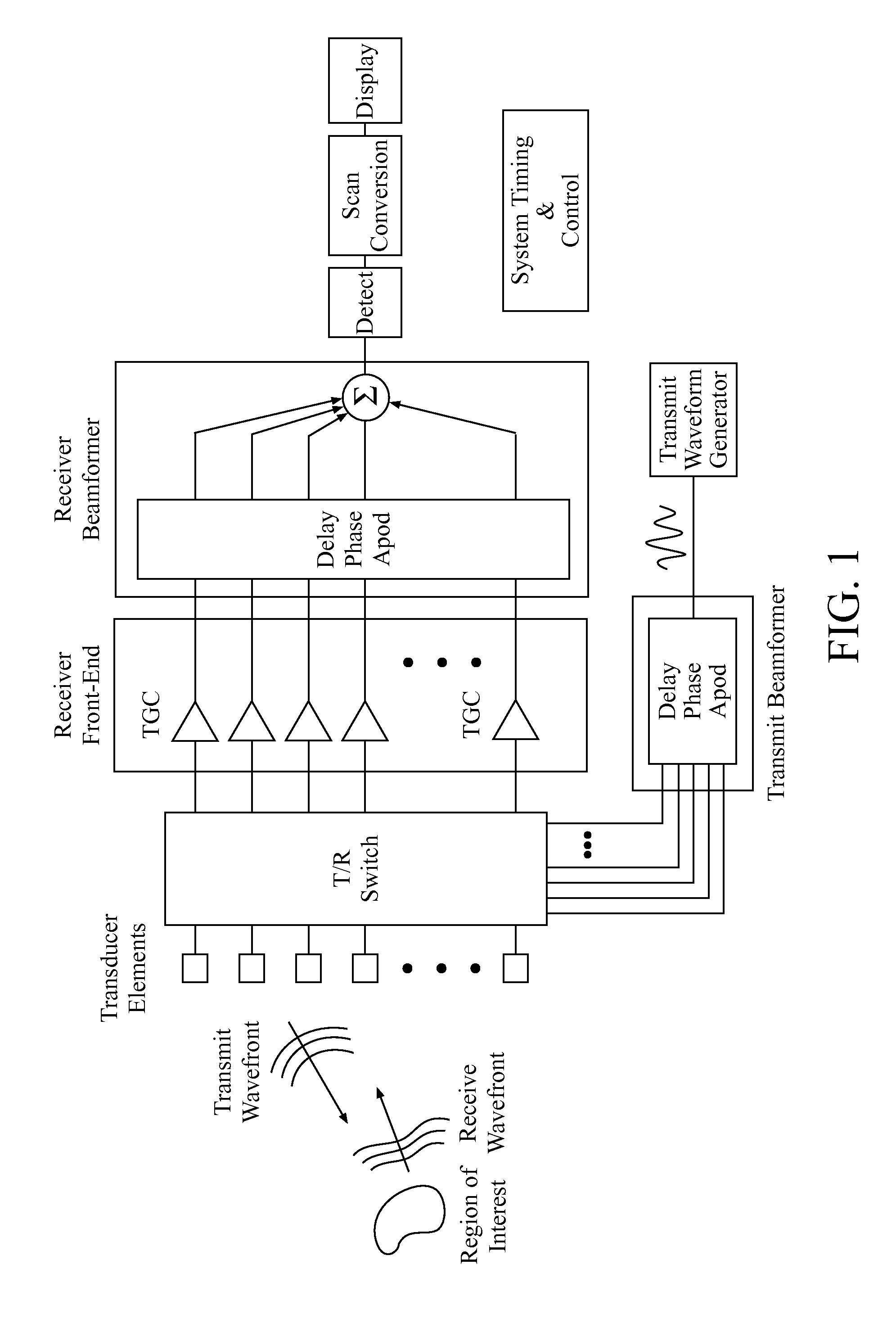Continuous transmit focusing method and apparatus for ultrasound imaging system
a transmit beam and ultrasound imaging technology, applied in tomography, instruments, using reradiation, etc., can solve the problems of limited transmit beam depth, lateral image non-uniformity, and potential frame rate, so as to improve performance/frame rate tradeoff, improve transmit resolution, and reduce round-trip sidelobe clutter
- Summary
- Abstract
- Description
- Claims
- Application Information
AI Technical Summary
Benefits of technology
Problems solved by technology
Method used
Image
Examples
example
Planar 1-D Transducer, Linear Scan Format, 2-D Image Formation
[0060]Consider the demodulated receive signal from a given transducer element as shown in FIG. 6. The signal {tilde over (s)}ch received by a transducer element located at r′=x′p, from a point scatterer at r=(r, x), insonified by the n-th transmit beam wavefront {tilde over (s)}xmt(t−Txmt, x−xn, r, rxmt), due to a transmit excitation of sxmt(t), where xn is the transmit beam origin location on the array, can be mathematically expressed as given by (15). The receive signal sch is simply the backscattered signal from the point scatterer at (r, x), attenuated and delayed by the propagation time Trcv from (r, x) back to the transducer receive element at x′p.
Txmt=Txmt(x-xn,r,rxmt)=rc+ΔTxmt(x-xn,r,rxmt)Trcv=Trcv(xp′-x,r)=r2+(xp′-x)2cs~ch(t-Txmt-Trcv,xp′,x-xn,r,rxmt)=-jϕd(t)∫hrcv(t-t′,xp′)s~xmt(t′-Txmt-Trcv,x-xn,r,rxmt)t′(15)
[0061]If the transmit excitation by the transducer is represented by
sxmt(t)=p(t)ejωxt (16)
where p(t) is ...
PUM
 Login to View More
Login to View More Abstract
Description
Claims
Application Information
 Login to View More
Login to View More - R&D
- Intellectual Property
- Life Sciences
- Materials
- Tech Scout
- Unparalleled Data Quality
- Higher Quality Content
- 60% Fewer Hallucinations
Browse by: Latest US Patents, China's latest patents, Technical Efficacy Thesaurus, Application Domain, Technology Topic, Popular Technical Reports.
© 2025 PatSnap. All rights reserved.Legal|Privacy policy|Modern Slavery Act Transparency Statement|Sitemap|About US| Contact US: help@patsnap.com



